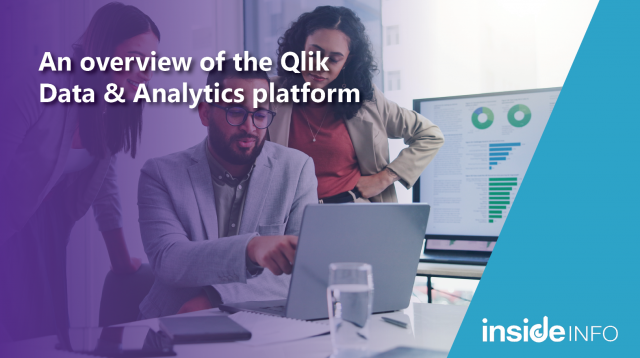Using Analytics To Prepare For The Sink-or-Swim Future of Australian Media

Data analytics and better use of business intelligence (BI) software has become a crucial strategic exercise for all companies, however making good use of data has never been so important for the media and entertainment industry (M&E) as the rapidly changing digital environment continues to alter customer expectations. And getting it right, literally, does pay. Research has shown that companies in general who have invested in data analytics are reporting an increased competitive advantage, with a stronger focus on specialised, innovative applications that have strategic benefits according to MIT Sloan Management Reviews publication, Analytics A Source of Business Innovation.
The very act of consuming content provides incredible amounts of data that can inform every aspect of content generation, packaging and distribution. The challenge in media, then, is not to generate data, but to integrate multiple data flows—new digital data along with more traditional sources of information—into their operations. Media companies must seize the opportunities this new data presents—or watch their pure digital competitors extend their lead in consumer intimacy.
Our work with media companies across the value chain, including content creators, aggregators and distributors, leaves us with no doubt that the opportunity to serve audiences better is immense, and the companies that are able to capitalise on this opportunity are likely to produce tremendous new value. Here’s some tips on how to prepare for the future of Australian media using analytics, to remain relevant.
Single View of the Customer Across All Platforms
Sounds easy right, however many struggle with this. With all the variety and wealth of data available to media companies, a big challenge is how to bring all this data together to improve decision making. This means utilising a variety of data sources from social media, data aggregators like Nielsen, advertising response data, traditional enterprise operating systems and other means. If you're an entertainment company that has a physical presence in theatres, theme parks, cruise lines or retail, you'll also need to analyse customer traffic, staffing, supply chain and logistical information to provide an optimal customer experience while increasing value and revenue from your properties. This means providing a consolidated view of performance across all operations. The inbuilt connectors available with BI platforms like QlikView and Qlik Sense for example, make it easy to draw data from these multiple data sources.
Revenue Growth Through Better Targeting
As media and entertainment companies broaden their content delivery platforms and offerings, they must understand how customers interact with each to fully see customer value and opportunities to up-sell and cross-sell. Knowing how customers change their preferences for certain platforms over time is important. Such an understanding also enables setting of justifiable rates for advertising across platforms and pricing for individual and combinations of platforms. Marketing offers and campaigns can be more accurately targeted. The value of the customer to the company can grow, even if they lose interest in certain delivery platforms, content, or other offerings over time.
We work with many of Australia’s leading TV networks to help them improve targeting and revenue growth. To achieve this, media companies need to understand customers better, how they consume content and services, and what advertisements attract follow-on activities. Media and entertainment companies can better establish the value of their brands and offerings leading to increased revenue from advertisers. They can also offer services and subscriptions to a potentially valuable customer database for the advertisers to mine themselves.
Using Analytics To Predict Bankable Assets
Qlik analytics can be used to predict whether current trends will continue and any possible implications or opportunities. In media, value comes from understanding and predicting the content (movies, video, music, books and games) audiences want. Data and analytics firepower can increase a media company’s odds of getting it right.
We’ve all heard the story of when the producers of House of Cards were shopping the series to various distributors, Netflix and the other networks bidding for it all knew that political dramas, David Fincher films and Kevin Spacey in a sinister role were highly bankable properties. But Netflix brought superior data to the bidding, based on its in-depth and fine-grained analysis of viewers’ habits over many millions of viewings of shows. Netflix executives not only knew these qualities were likely to make the show popular; they also knew how long viewers had stuck with similar programs, through seasons and individual shows, and which characters had drawn the strongest interest. That confidence allowed Netflix to make a bolder bid and win the show as well as three Emmy awards, despite the recent decision to drop the series.
Qlik Self-Serve Business Intelligence Drives Operational Efficiency
By providing self-serve business intelligence as a differentiator, media companies provide access to relevant information to everyone who needs it from the sophisticated needs of the pricing and insights teams to client information, discounts and placements for the sales rep, to be competitive. If not, media companies will increasingly find themselves outpaced by the better-informed, quicker business moves of those that excel in analytics.
Inside Info & Qlik In The Media & Entertainment Industry
More than 300 media providers worldwide are using Qlik to overcome their business intelligence challenges and improve performance. Qlik's Data Discovery BI approach enables media companies to glean maximum insight from data by enabling easy, flexible analysis. Analysis can be performed in real-time keeping up with instant platforms like social media. Its intuitive dashboards easily shift from lag indicators to predictive analysis encouraging collaboration across the enterprise. If you’d like to know more about how Inside Info can help, just reach out to us, we’d love to hear from you.





